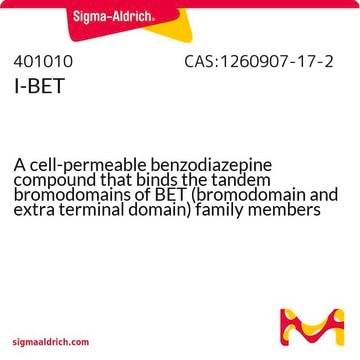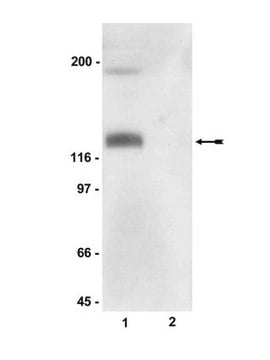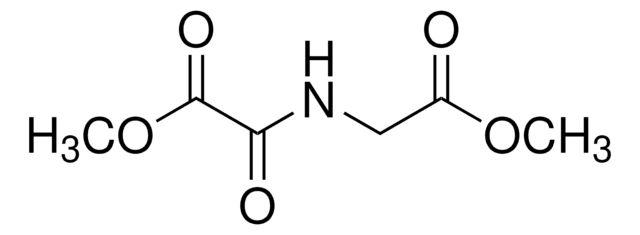SML0701
GSK-J4
≥98% (HPLC)
Synonym(e):
Ethyl 3-((6-(4,5-dihydro-1H-benzo[d]azepin-3(2H)-yl)-2-(pyridin-2-yl)pyrimidin-4-yl)amino)propanoate
About This Item
Empfohlene Produkte
Qualitätsniveau
Assay
≥98% (HPLC)
Form
powder
Lagerbedingungen
desiccated
Farbe
white to beige
Löslichkeit
DMSO: 20 mg/mL, clear
Lagertemp.
2-8°C
SMILES String
O=C(OCC)CCNC1=CC(N2CCC(C=CC=C3)=C3CC2)=NC(C4=CC=CC=N4)=N1
InChI
1S/C24H27N5O2/c1-2-31-23(30)10-14-26-21-17-22(28-24(27-21)20-9-5-6-13-25-20)29-15-11-18-7-3-4-8-19(18)12-16-29/h3-9,13,17H,2,10-12,14-16H2,1H3,(H,26,27,28)
InChIKey
WBKCKEHGXNWYMO-UHFFFAOYSA-N
Verwandte Kategorien
Anwendung
Biochem./physiol. Wirkung
To learn about other SGC chemical probes for epigenetic targets, visit sigma.com/sgc
Leistungsmerkmale und Vorteile
Sonstige Hinweise
Ähnliches Produkt
Lagerklassenschlüssel
11 - Combustible Solids
WGK
WGK 3
Flammpunkt (°F)
Not applicable
Flammpunkt (°C)
Not applicable
Analysenzertifikate (COA)
Suchen Sie nach Analysenzertifikate (COA), indem Sie die Lot-/Chargennummer des Produkts eingeben. Lot- und Chargennummern sind auf dem Produktetikett hinter den Wörtern ‘Lot’ oder ‘Batch’ (Lot oder Charge) zu finden.
Besitzen Sie dieses Produkt bereits?
In der Dokumentenbibliothek finden Sie die Dokumentation zu den Produkten, die Sie kürzlich erworben haben.
Kunden haben sich ebenfalls angesehen
Artikel
We offer a variety of small molecule research tools, such as transcription factor modulators, inhibitors of chromatin modifying enzymes, and agonists/antagonists for target identification and validation in gene regulation research; a selection of these research tools is shown below.
Verwandter Inhalt
Die Abfrage von Protein-Signalwegen ist ein grundlegender Bestandteil der Erforschung und Entwicklung von Arzneimitteln. Erfahren Sie mehr über die Analyse von Protein-Signalwegen, einschließlich des Screenings von Substanzbibliotheken, der Untersuchung von Protein- und Enzymaktivitäten und der Modulation von Protein-Signalwegen mit kleinen Molekülen.
Explore protein pathway analysis including chemical library screening and modulating pathways with small molecules.
Unser Team von Wissenschaftlern verfügt über Erfahrung in allen Forschungsbereichen einschließlich Life Science, Materialwissenschaften, chemischer Synthese, Chromatographie, Analytik und vielen mehr..
Setzen Sie sich mit dem technischen Dienst in Verbindung.
















